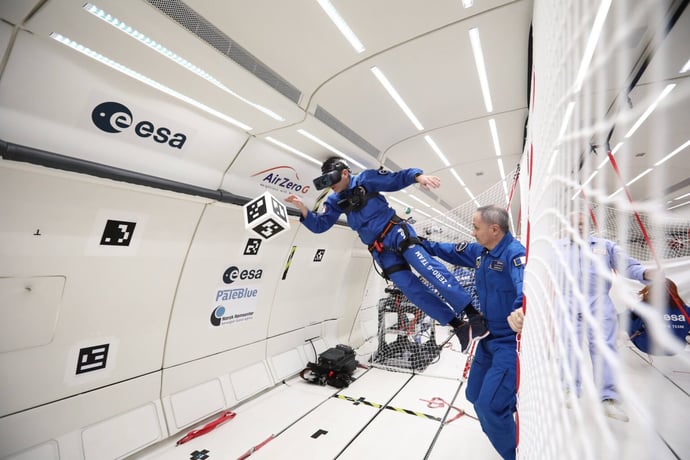Introducing the Ultime XR Fighter Jet Simulator with Dogfight Boss
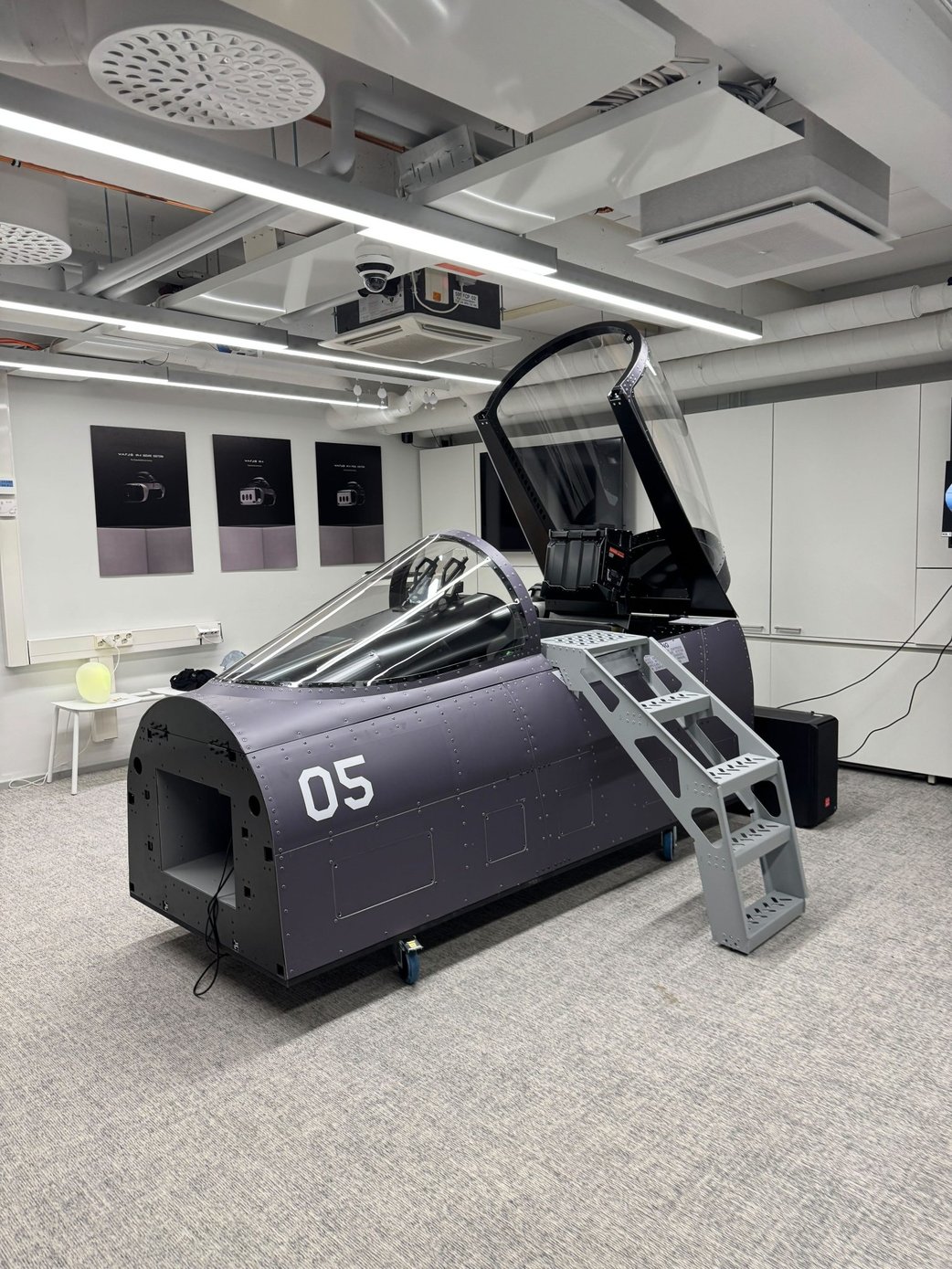
Can you introduce Dogfight Boss to our readers?
What’s your company’s mission, and how did you come to specialize in building replica cockpits and simulation hardware?
Dogfight Boss specializes in creating professional-grade simulators for aviation, defense, and specialized industries. We focus on delivering ultra-realistic hardware systems that bring pilots and operators as close as possible to the real thing. Our goal is to make training, mission rehearsal, and even R&D safer, more immersive, and cost-effective.
What motivated you to focus on creating full-scale cockpit replicas like the F/A‑18C/E?
Was there a gap or need you saw in the training or simulation world?
Our simulators are modular, ranging from simple instrument panels or HOTAS setups to full cockpit replicas (see picture). Full-scale models with canopies and realistic fuselages are mainly used for marketing and events to attract audiences. For training, accuracy is key; interior details are carefully designed for proper ergonomics, with all instruments in correct positions, enabling realistic behavior. This helps pilots develop muscle memory, cockpit flow, and emergency procedures as they would in an actual jet, building confidence in their equipment. For professional use, customers prefer simplified fuselages made from steel and aluminum. In mixed reality setups, pilots see only the interior, while the exterior is masked virtually.
Who are the typical customers for your simulators?
Are they defense and military, aerospace companies, flight schools, esports or sim racing enthusiasts, or something else?
We are focused on the customers from the defense sector (air forces, naval aviation, and special units), but we also serve aerospace research, flight academies, and even top-tier civilian clients. Increasingly, we’re seeing interest from innovation labs testing out XR/MR solutions.
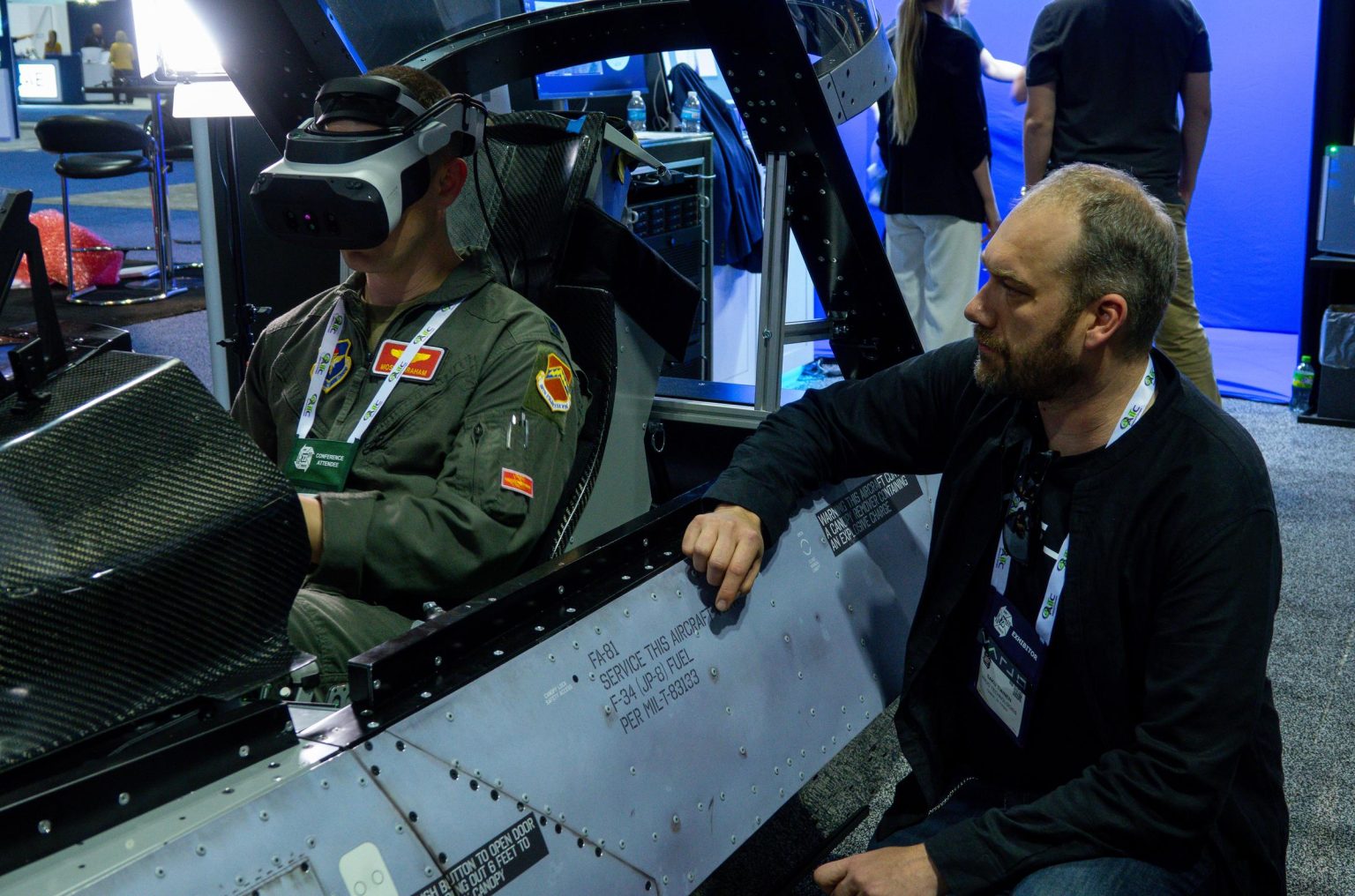
What’s unique about the F/A‑18C/E cockpit you delivered to Varjo HQ?
What exact components does it include — HOTAS, MFDs, ejection seat, pedals, force feedback, etc.?
The F/A-18C/E cockpit delivered to Varjo is a fully detailed replica, including HOTAS, displays, switches, pedals, and a seat. It closely matches real-world dimensions and ergonomics. We built all panels, switches, MFDs, pedals, and UFC from scratch, as well as the digital displays on the UFC sized correctly. The only off-the-shelf part is the HOTAS.
But for the F-16 and all recent simulators we’re developing everything from the panels, displays, throttle to the force-sensing stick base and whole construction with electrically lift seat and haptic seat pads.
For Varjo, we also programmed native blending to integrate seamlessly with XR demos, so it’s ready for high-end mixed reality use cases.
How close is the experience to a real F/A‑18 fighter jet?
Which systems are 1:1 replicas, and where are there simplifications or adaptations?
We replicate all mission-critical systems and touchpoints. Some non-critical systems, like environmental controls, might be simplified, but everything the pilot touches, sees, or interacts with is spot on. That’s key for developing authentic muscle memory.
What’s the role of haptics and physical feedback in the system?
Do pilots (or demo users) feel resistance, vibrations, or weight similar to the real aircraft?
Buttons and switches have the right tactile feel, and we sometimes add vibration elements (in this case incorporated into the seat) for events like gear deployment, stalls, or weapon release. Physical cues are just as important as visual elements for achieving immersion. Since there is no possibility of simulating G-forces, we use force feedback on the stick occasionally or vibration pads.
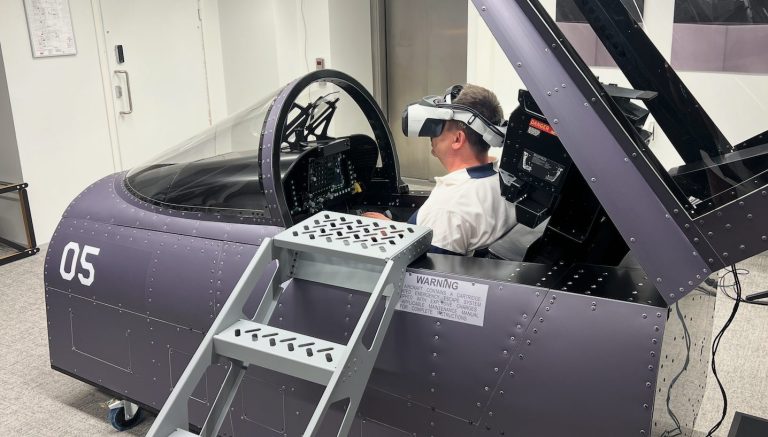
How does the cockpit integrate with XR headsets like the Varjo XR‑4?
What makes mixed reality valuable compared to just using a screen or projector?
Our cockpits connect directly with the sim software, and the Varjo XR‑4 overlays a perfectly aligned virtual environment onto the physical hardware. This gives pilots the ability to look outside the cockpit and see a whole virtual world, while their hands stay on real controls. It’s the best of both worlds.
What does XR add to the training or simulation experience?
For example, does it improve realism, spatial awareness, multitasking, or scenario flexibility?
XR adds depth, situational awareness, and dynamic interaction beyond what screens can offer. You can simulate air-to-air combat, refueling, carrier landings, or complex joint missions in ways that feel tangible. It massively amplifies training value.
What are the technical challenges of combining physical simulators with XR hardware?
How do you handle things like alignment, motion tracking, occlusion, or latency?
Aligning the virtual and physical worlds is no small feat, millimeter precision matters when you’re toggling switches or tracking targets. Latency, motion tracking, and occlusion handling are constant challenges, but working closely with Varjo lets us push the envelope. Because we have the best coders from AAA gaming industries, we are also able to help software developers to optimize the IG for XR to get the best performance without compromises.
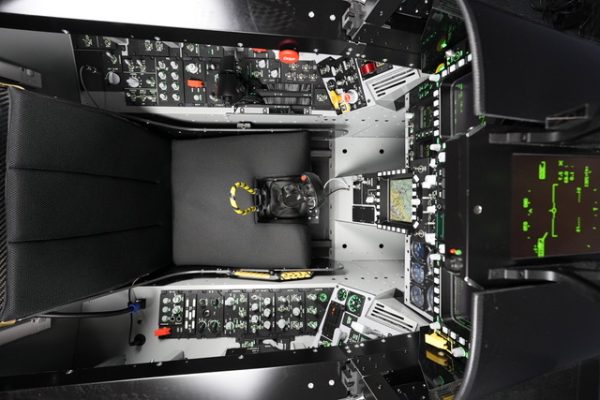
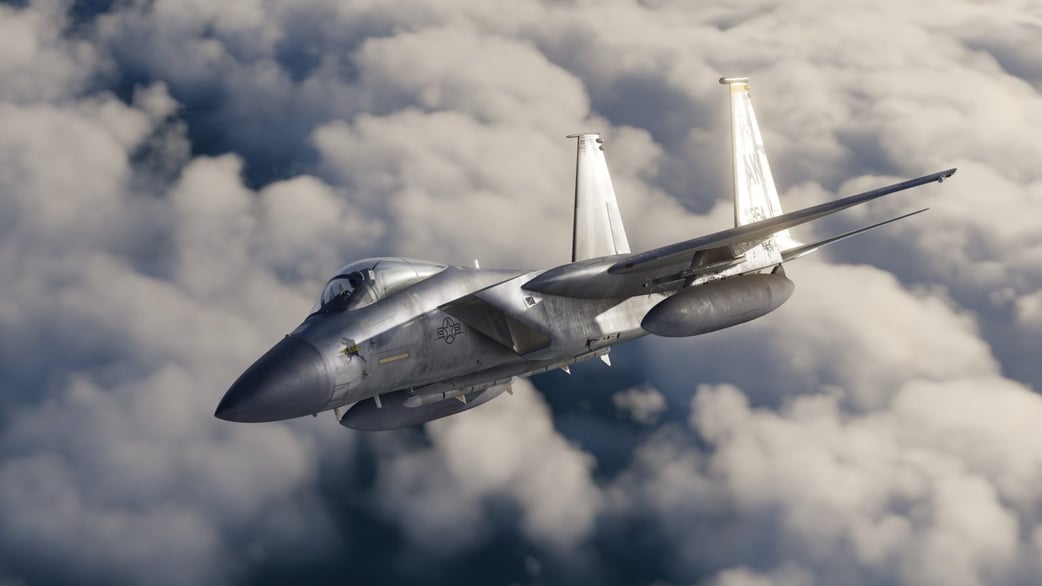
What simulation software or platforms is the cockpit compatible with?
Our hardware works with a range of platforms, from X-Plane to military-grade software like Mission Combat Simulator® (MCS), Metrea, Prepar3D or custom defense systems. We design for flexibility, so clients can choose the ecosystem that fits their needs. We’re also ready for classified or proprietary environments.
What’s involved in integrating your hardware into an existing simulation setup?
Is it plug-and-play, or does it require custom middleware or configuration?
We provide our DFB App, which serves as middleware that enables us to integrate any software. Alternatively, we can deliver it to the customer for their own integration.
Our app includes the ‘Instructor Station’, which has a graphical layout of the whole cockpit, with real-time displays that update and the instructor is able to control the switches remotely. The graphical layout also serves as the simulated hardware and customers with confidential IGs are able to integrate our HW without its physical presence. This is quick and effective way how to save time before we deliver the hardware.
Our ‘Instructor Station’ can show all the simulators on the ethernet or Wifi and the instructor is able to remotely control all of them. Part of our app is a DIS protocol and, for example, radio comms with numerous channels. The instructor can select simulators that will be able to communicate with each other, independently of the IG.
How do you ensure that hardware updates (e.g., new cockpits or features) stay compatible with evolving software and XR platforms?
We constantly update firmware and software to stay compatible with evolving sim platforms and XR hardware. Collaboration with partners like Varjo is key to future-proofing what we deliver. We want our clients to get long-term value, not just a one-off system.
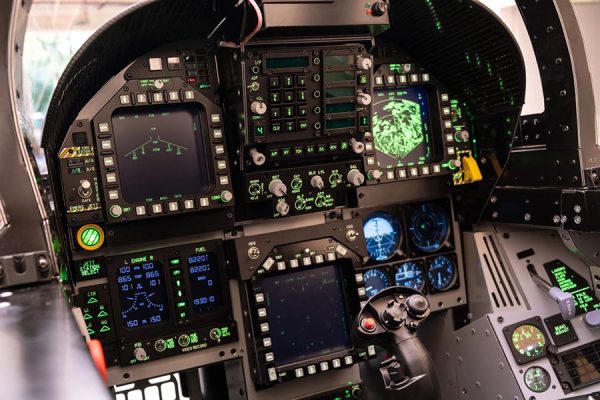
What are the most exciting use cases you see for XR + cockpit simulators?
For example, pilot training, mission rehearsal, research, or even public exhibitions?
We’re seeing XR cockpits used for everything from fighter pilot training to mission rehearsal for complex joint operations. They’re also incredibly valuable in R&D, testing new cockpit layouts or human-machine interfaces. And yes, sometimes we build for public demos and airshow activations. People love experiencing this tech firsthand.
Are there any standout success stories or deployments you can share (without breaking confidentiality)?
We have military programs using our simulators to significantly reduce live flight hours, cutting costs and environmental impact. In aerospace R&D, clients are using them to test next-gen cockpits before metal is ever cut. We’re proud to contribute to safer, smarter aviation. One use case we can mention is turnkey simulation solution for Czech University of Defense, we are cooperating with them on the integration of XR simulators and tailoring the simulators for their training needs, to effectively teach future fighter pilots. Other military integrations are ongoing and still not public. But soon there will be some announcements!
What’s the role of realism versus training goals?
Do all clients want the most realistic setup possible, or do some prioritize cost, portability, or specific functions?
We are focused on professionals and there are requirements to always be functional, as close as possible to the original with reasonable ergonomics and behaviour, and remain easy to maintain and modular.
They don’t want fancy fuselages with canopies and camouflages. They need the perfect training devices, which we deliver. For example our fully functional F/A-18C with all weapons systems and 6 displays, runs only 1 USB cable to one PC. The F-16 has 8 displays and it runs 1 HDMI and 1 USB to 1 PC, also with an XR-4 headset connected and produces the full details availiable from Mission Combat Simulator® (MCS). It runs smoothly, with no lag and everything is modular, which means that customer can remove any panel in the simulator in a matter of minutes. In the meantime whole simulator works. We are making many different blocks and the customer can replace panels according to his upgraded plane to have the same training device. Training takes maximum 3 days and then any personnel is able to maintain our hardware.
How do you see XR evolving within flight simulation over the next 5–10 years?
What excites you most about where this technology is heading?
XR is going to be everywhere in training: joint exercises, live-virtual-constructive (LVC) simulations, even AI-generated opponents. We’re excited about making complex, high-stakes training more accessible, scalable, and effective.
Are there other aircraft, vehicles, or domains you’re expanding into?
For example, ground vehicles, maritime, or other defense platforms?
We’re already branching into helicopters, door gunners, ground vehicles, naval systems, and JTAC solutions. Anywhere there’s a need for precision training with physical controls and virtual worlds, we’re ready to help. We are able to develop any hardware that needs to be simulated. We are not only hardware developers, we are Integrators and we can deliver precise turnkey solution.
How do you see the collaboration between Dogfight Boss and Varjo evolving?
Varjo’s XR is the visual benchmark. It unlocks use cases that just weren’t possible before. Together, we’re creating systems that redefine what’s possible in professional simulation.
On a personal note, what’s your favorite part of seeing people use your simulators for the first time?
The moment someone puts on the headset, grabs the stick, and realizes, ‘Whoa this feels real!’ That spark of immersion is why we do what we do. It’s rewarding every time.
If you could take any cockpit simulator home for a weekend, which one would it be — and why?
I had the simulator at home for a while, then my wife said enough! So I had to create a company, and here we are with Dogfight Boss! This means I must be ok with having simulators in my office only, and I cannot think about taking anything home. That being said, a Blackbird, F-117,F-14,F-15, Tempest, FockeWulf would be a nice addition to my living room, each one has its magic.


